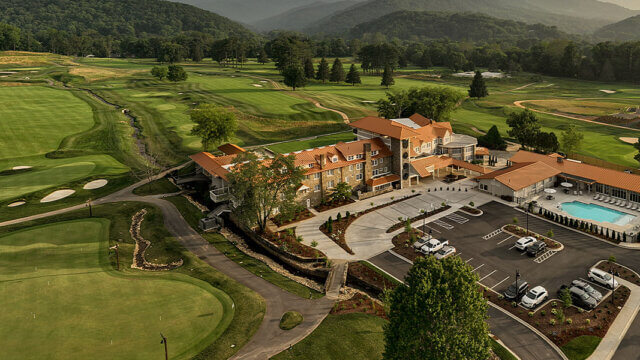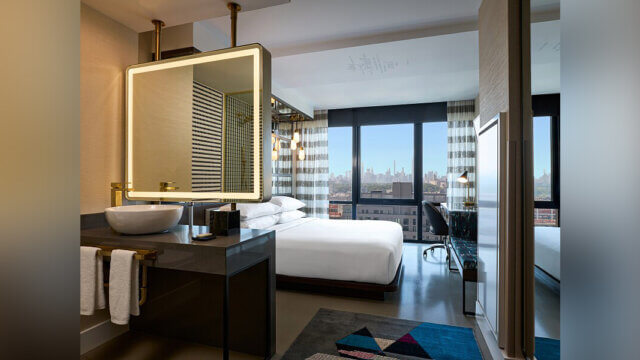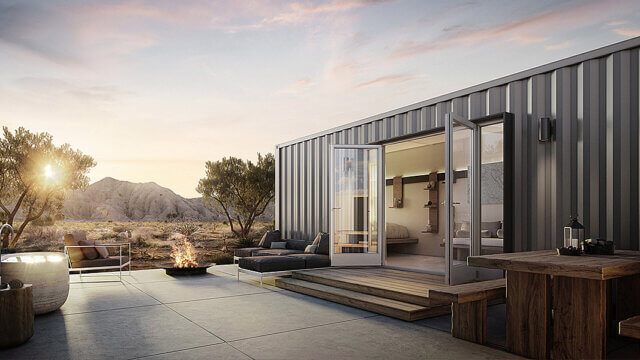FORT LAUDERDALE, FL—As unpredictable weather becomes the norm—whether it’s the impact of hurricanes or other damaging storms—it is wise to prepare for the unexpected.
EDSA, a full-service planning, landscape architecture and urban design firm, works with hoteliers to extend the seasons with flexible design and aesthetic alternatives that address seasonal weather changes and establish a continuous, year-long appeal.
“When taking on a new design project, we always prioritize sufficient enclosures, short accessways, shelter structures and flexible ground surfacing as they are a necessity for hotels in areas subject to intense weather conditions,” said EDSA Principal Gregg Sutton, based here. “Implementing proper coatings, efficient insulation technology to retain heat, and proper drainage systems are integral for storm and variable weather management. Also, with climate change and climbing temperatures year-round, we pay attention to hardscape and site furnishings that can withstand heat, and carefully test materials to ensure safety.”
The main impact on structures in the coastal U.S., Caribbean and Bahamas is the sea level rise during challenging weather.
“EDSA works with engineers and architects to ensure structures are elevated to a safe level where strict coastal codes do not enforce this, such as in the islands,” said Sutton. “Also, the damage to plant material and flooding is always a concern. The storms are going to hit at some point, so we have to minimize the impacts as much as possible to the overall landscape, lighting, signage, exterior furnishings, etc.”
For hoteliers and designers, Sutton outlined considerations that should be taken into account when designing a weather-responsive hotel.
Preparation is Key
Hoteliers and designers will want to take several weather-preventative design measures into consideration when designing a hotel, including elements that exhibit indoor/outdoor connections with nature through adaptive enclosures, plantings, covered walkways, transportation alternatives and circulation patterns that help eliminate the extremes of heat, cold, humidity and wind exposure. In addition, planned programming often related to seasonal themes can add to recreation levels and provide for human comfort.
Look at the Infrastructure
Keep above coastal flood levels, use impact glass and strengthen the natural dunes of the coast with native plant material that can take the water, salt and wind. Select furnishings that can easily be stored in safe areas when major weather hits and provide lightning shelters with alarms and warnings. Finally, have a safe and strict operation regarding beach sports such as surfing, kayaking and kitesurfing.
According to Sutton, hoteliers often refer to designing a weather-proof hotel as “extending the seasons,” where weather-responsive elements help establish a continuous, yearlong appeal by addressing changes in temperatures, precipitation levels and duration of sunlight.
“Flexible design and aesthetic alternatives that account for materiality, scenic quality and space realignment can extend a property’s value,” he said.
However, Sutton urges caution when trying to save costs in this area as the impact can be severe.
“We can help determine the level of design of seasonal structures, whatever that may be, and in some cases, it may be not forcing a design or construction if it will be impacted,” he said. “We always work with coastal engineers and structural engineers on these designs. We have enforced, in our designs, items such as flood panels to structures, increased heights of pool decks, restrooms, F&B outlets, etc.”
EDSA worked on the Seminole Hard Rock Hotel & Casino in Hollywood, FL, which is an example of a weather-responsive design.
“This property is weather responsive because its exterior designs meet the stringent Dade County code. In addition, flood-height regulations have been met and we have accomplished an affective stormwater drainage system,” he said.
It’s all about prevention. Sutton and his team have seen many examples of hotels that were severely damaged due to their lack of weather responsiveness, and they’ve also witnessed many structures and landscapes that have survived storms and impacts.
“Through our experience and expertise, we can determine the necessary checklist needed for a safe and responsible design,” he said. “Getting ahead of and implementing the latest weather-proofing technology like proper solar paneling, weather-resistant proofing and the like, not only make a hotel more energy-efficient, but allow it to withstand debris from tornados, harsh hurricane winds, and other severe weather conditions. When constructing a new hotel, utilizing state-of-the-art coating systems can protect the building from rust, corrosion and, most importantly, harsh weather.”
As this year comes to an end, EDSA is looking ahead to new projects.
“EDSA has expanded into the Middle East along the Red Sea, where the salt spray and extreme heat are very prevalent at certain times throughout the year. Our designs create a wonderful waterfront experience that are the closest possible proximity to the coastlines,” he said. “We continue to maintain our responsibility as designers by setting the FFE’s to the right levels while establishing native landscapes that withstand the test of time.”




